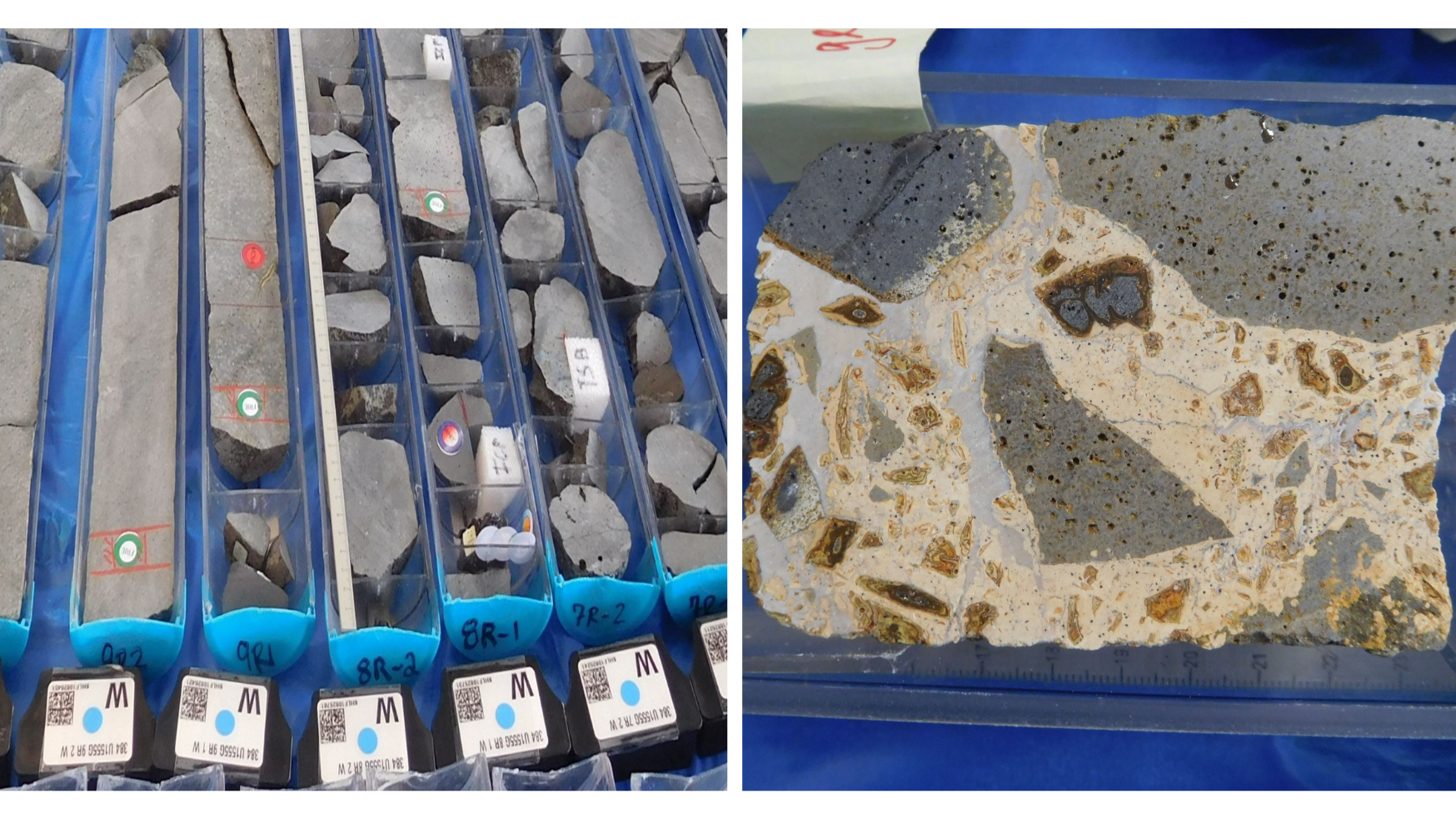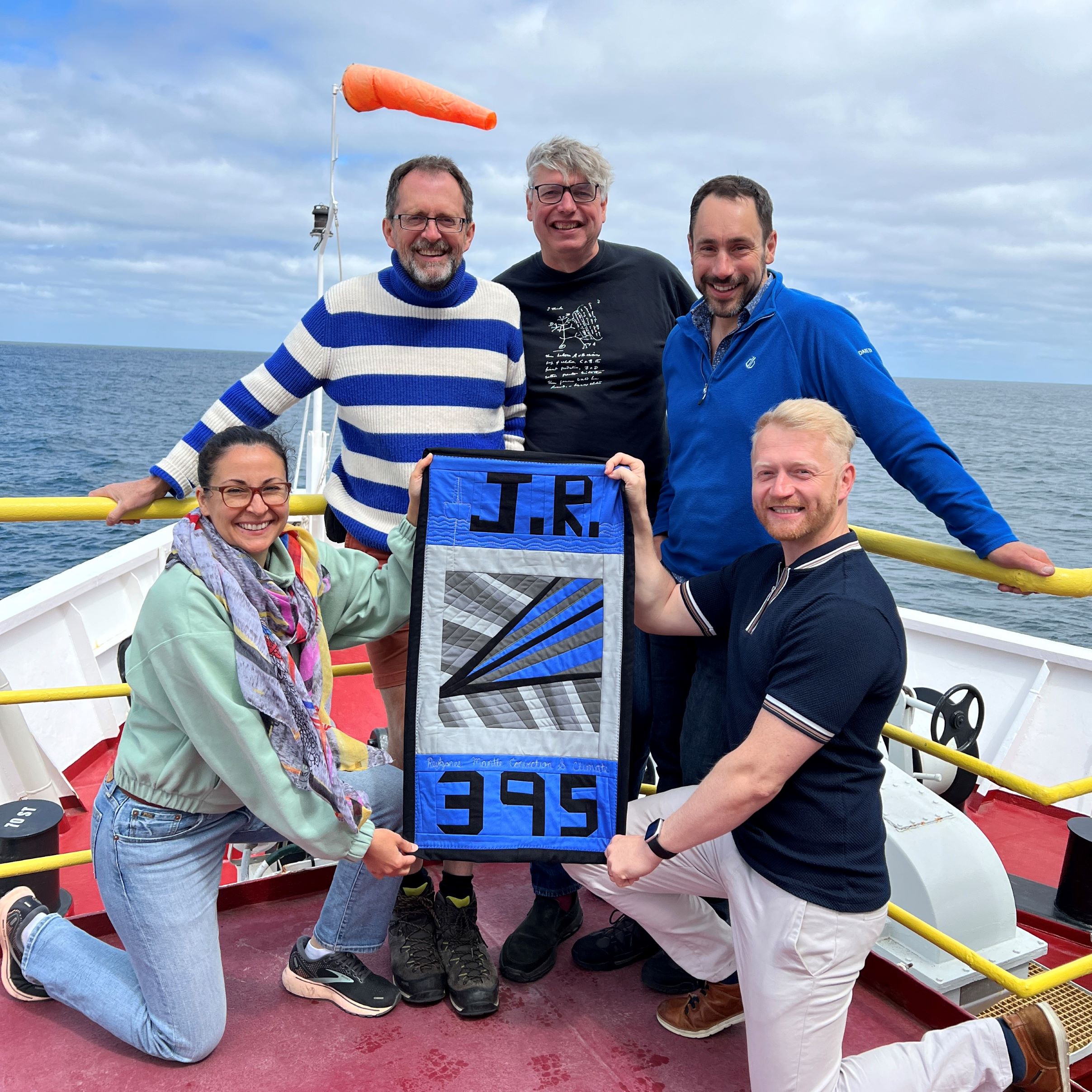
Submitted by Dr C.M. Martin-Jones on Wed, 12/07/2023 - 14:29
A geophysicist from Cambridge Earth Sciences is part of an international expedition that will drill beneath the seabed near Iceland in order to investigate how the slow stirring of the Earth’s deep interior affects the surface we live on.
The International Ocean Discovery Program (IODP) expedition will target the flanks of the Reykjanes Ridge, where the North American and European tectonic plates spread away from each other. Deep beneath this ridge sits a gigantic pancake of hot mantle rock that is centred beneath Iceland.
During two months this summer, the team will drill six deep holes into sediments and basaltic rocks either side of the Reykjanes Ridge spreading centre. Cambridge’s Nicky White, who is one of thirty scientists on board, led the original seismic survey which helped locate the drilling sites.
A key question for the crew onboard the scientific research vessel Joides Resolution is how the Icelandic plume — which funnels hot and slow-moving rocks up from Earth’s deep mantle — has impacted ocean circulation in the North Atlantic through time. The seafloor on top of this plume is domed upwards between Britain and Greenland and is about two kilometers shallower than it should be.
The plume has swelled and contracted over time, etching a series of V-shaped ridges and troughs onto the seafloor on either side of the Reykjanes Ridge. “The Reykjanes Ridge gives us a window into how plume activity has fluctuated through time,” said White.
The researchers will drill down several kilometres into basaltic rocks that form the top layer of the oceanic crust. By reading the chemical profile of these rocks, it is possible to gauge how the internal temperature of the Icelandic plume has fluctuated through time.
Rock samples ready for analysis.
Their second line of investigation focuses on the sediments which were laid down on top of the basalt by the ebb and flow of deep-water currents. These sediments contain clues as to how the bodies of deep, cold water that form to the north of Iceland flow into the rest of the Atlantic Ocean.
This deep water snakes over a long shallow ridge that extends from East Greenland to Iceland and Scotland. It is thought that, during phases when the Icelandic plume is more active, this ridge is pushed upwards — shifting deep water currents. “The Greenland-Iceland-Scotland Ridge acts a bit like a canal lock gate, because the plume pushes it up and down,” said White. “In this way, the plume is likely to have had a profound effect upon the palaeoceanographic gateways that release North Atlantic Deep Water into the rest of the oceans.”
Through a combination of analyzing basalts and sediments, the team aim to find the link between plume productivity and ocean circulation. The scientists are working 12 hour rotational shifts to record and analyze the drill cores as soon as they are hauled on deck. “The efficiency of the process is incredible,” said White, “It’s almost like a factory production line.”
“There is a marvelous sense of adventure on board,” he added, “Scientifically, this expedition is a real culmination of decades of research and collaboration.” White’s interest in the Icelandic plume started in the mid-1990s, when he and Cambridge Earth Scientist Bryan Lovell investigated how fluctuations in the plume influenced submarine sedimentation around the British Isles.
The five UK scientists on board, left to right: Dr Sevi Modestou (Northumbria), Professor Nicky White (Cambridge), Professor Paul Pearson (UCL), Dr Tom Dunkley Jones (Birmingham), and Dr David McNamara (Liverpool).
Expedition 395
IODP Expedition 395 involves thirty scientists from nine countries, with expertise in a range of geoscience and biological disciplines. It set sail on June 13th 2023 and the expedition will last for eight weeks, during which the scientists and the ship’s crew will be at sea for the entire time, living and working.
The expedition is led by Co-Chief Scientists Anne Briais (CNRS, France) and Ross Parnell-Turner (Scripps Institution of Oceanography, USA).


